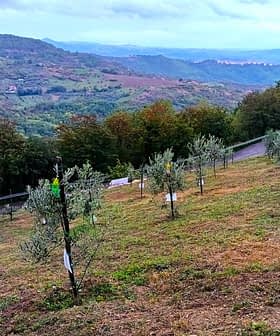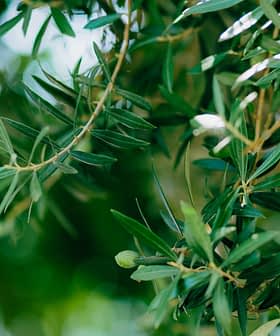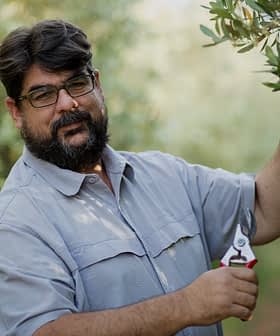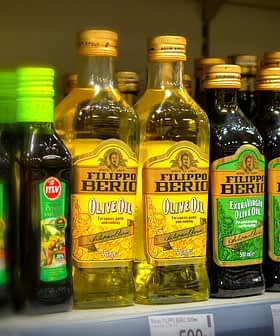Italian Olive Oil Production Falls to Record Lows
The Institute of Services for the Agricultural and Food Market said 185,000 tons produced. A raft of climatic and phytosanitary problems are to blame.
The Institute of Services for the Agricultural and Food Market (ISMEA) reported that Italy’s olive oil production during the current season has dropped significantly to 185,000 tons, with the southern part of the country being the most affected due to adverse weather and phytosanitary issues. Despite the challenges, Italian olive oil producers have maintained high quality standards by closely monitoring their olive groves and responding effectively to the changing climate conditions.
The Institute of Services for the Agricultural and Food Market (ISMEA) has released data indicating that the volumes produced during the current olive oil crop season in Italy have reached record lows, amounting to 185,000 tons (slightly above the 182,000 tons of 2016).
If you want to produce a good extra virgin olive oil, you have to pay more and more attention and to implement a close supervision of the olive grove. In short, you have to be ready to respond to today’s challenges.
The significative drop – nearly 57 percent compared to the previous year – is mainly due to a notable decline that occurred in the southern part of the country. There, farmers suffered the most from adverse weather events and phytosanitary problems, both of which also pose a threat to growers all over the peninsula.
Puglia, which normally accounts for half of national production, saw its production decline by 65 percent. In this area, as well as in other southern regions, such as Sicily, Calabria and Campania as well as in Lazio, Marche, Umbria, and Sardinia further north, a fall in the production was foreseeable before the start of harvesting operations.
See Also:Olive Oil ProductionOn the other hand, areas of some northern regions, including Liguria, Lombardy, Veneto and Friuli-Venezia Giulia, have benefited from better conditions, which restored good and often higher than average production levels.
The natural tendency of alternate bearing would at any rate have led to an overall slight decrease, but winter frosts followed by a patchwork of climate issues during the warmer months, including heavy rain and strong wind, considerably exacerbated the situation.
On this point, it is getting harder to deny a connection between production difficulties and climate change, which is now underway and becoming the olive growers’ overriding challenge. The experience of the last decade suggests that complex seasons are increasingly more frequent in basically all producing countries.
ISMEA notes that over the last six years, in Italy, volumes produced during the ‘off-years’ have always proved to be lower than the average physiological level.
“We must make clear that a series of difficult harvests marked by low amounts did not compromise the quality of the Italian extra virgin olive oil,” Maria Gabriella Ciofetta, an experienced professional taster, said.
“Over the last years, farmers have started to address the climatic challenges and related phytosanitary problems with great commitment,” she added. “Today’s producers’ standards are very high thanks to a good starting point made of a greater than ever knowledge, combined with the ability to innovate, and the desire to promote their territories through a respectful and sustainable approach.”
These remarks have been broadly confirmed by the successful performances, with respect to the quality, of the Italian producers, over the years.
“Our qualitative standard is always high,” Giovanni Sputore, of La Selvotta, said. Last year, he earned two awards at the NYIOOC World Olive Oil Competition.
“We did a good job again this season, despite having seen a dip in production by 20 percent. This does not reflect the general situation of our area, as the overall drop exceeded half of the average volumes,” the Abruzzo-based producer said, adding that only farmers who paid close attention to the seasonal development of the olive trees, and therefore to any pest attacks, were able to obtain a good product.
“In addition to olive fruit fly outbreaks, we first suffered very rainy weather, which became very dry in late September and early October, and this was followed by strong winds that made the fruits fall,” he added. “The only way to make a good product is to implement close supervision of the olive grove and to be prepared to act. Those who did it obtained great results.”
The unpredictability of these complex seasons is shown by the experience of Pietro Zecchini, at Antica Quercia Verde.
“In our area, in Cortona, we have had one of the best productions in recent years, probably the best one since we have run the company,” he said. “Since we are organic farmers, there are years the presence of the fly can be problematic, but during the last one there was no sign of this pest, as we monitored it all summer.”
“However, I think that growers who delayed the harvest may have been troubled with it. Also, in this part of Tuscany several orchards suffered from drought,” Zecchini added. “Fortunately, we got the right amount of rain which led the olives to perfect ripeness in time for the harvest. In terms of quantity, last year was catastrophic, as we produced only 10 percent of our average amount, but this year we have been compensated, achieving 50 percent more than the average. We are satisfied. Basically, the climate was favorable, and an early harvest allowed us to be loyal to our high standards.”
Other producers confirmed that when it comes to the agronomic management, no one can say it has been an easy season.
In Sicily, at Agricontura, Giancarlo Paparoni had to work hard to make the best use of his Santagatese, Minuta, and Verdello plants.
“The latter two are late-ripening varieties, and normally the olive fruit fly does not represent a threat to them, but this year we have lost more than half of the production because of it,” he said. “This pest usually causes minimal damage to our olive groves, but this time it arrived in September, suddenly, as an unwanted surprise.”
“Some of our olive trees are located close to the sea, and the others are at about 200 meters (656 feet) above sea level, where I managed to save more fruits thanks to a more favorable position. And despite this problem, I obtained a very good product,” Paparoni added.
The producer from Mirto, in the province of Messina, explained that in his organic olive groves, he uses kaolin and pheromone plastic-free traps against the fly.
“If you want to produce a good extra virgin olive oil, you have to pay more and more attention and to implement a close supervision of the olive grove. In short, you have to be ready to respond to today’s challenges,” the Sicilian producer concluded.









